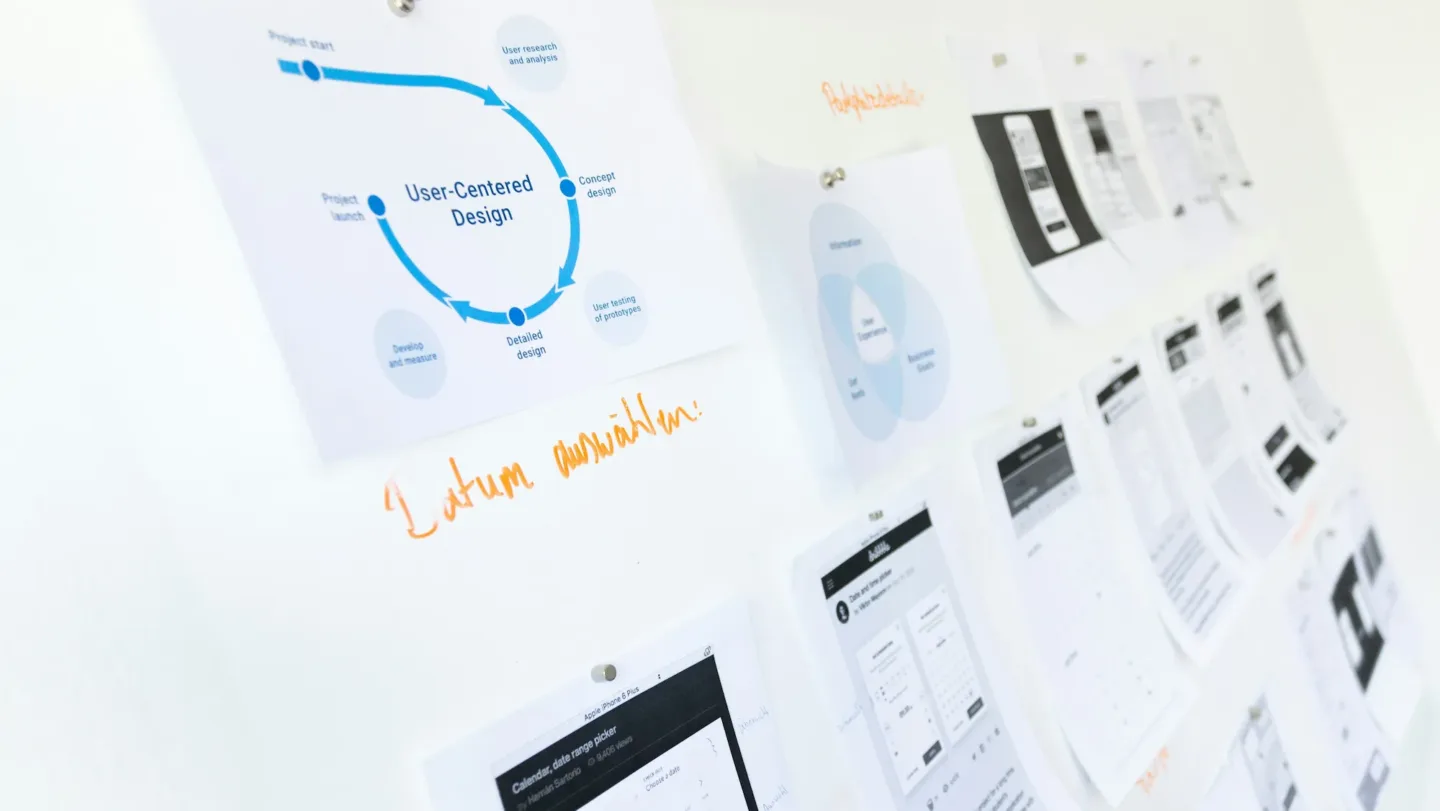Beyond Buzzwords Agile vs. Waterfall – Which Methodology Suits Your Project Best?
Beyond Buzzwords Agile vs. Waterfall – Which Methodology Suits Your Project Best?
In the fast-changing world of project management and software development, Agile and Waterfall are two methodologies you’re bound to encounter. But what do these terms really mean? ow do they affect your projects? This post takes a closer look at both, offering insights for project managers, software developers, IT pros, and product managers. By the end, you’ll have a clear idea of each methodology and how to pick the right one for your needs.
The Heart of Project Management
Before we get into the nitty-gritty, let’s talk about why project management methodologies matter. Good project management is all about delivering great results on time and within budget. That’s where Agile and Waterfall come in – they provide frameworks that help teams streamline their processes, adapt to changes, and hit their project goals effectively.

Product Designers using Whiteboard for User-Centric Project Management
To appreciate the strengths and weaknesses of Agile and Waterfall, it’s helpful to understand their origins:
The Rise of Waterfall
The Waterfall model came about in the 1950s when everyone was focused on industrial engineering and manufacturing. It has a simple, step-by-step approach that mirrored the assembly lines back then. Projects were broken down into clear phases—requirements, design, implementation, verification, and maintenance. Each phase had to be finished before moving on to the next, making it a pretty linear and structured process.
The Advent of Agile
Fast forward to the 1990s, and the tech industry was experiencing rapid change. Traditional methodologies like Waterfall couldn’t keep up with the dynamic nature of software development. Enter Agile. Agile methodologies, formalized in the Agile Manifesto of 2001, emphasized flexibility, customer collaboration, and iterative development. Agile allowed teams to adapt quickly to changes, making it ideal for projects where requirements were not well-defined from the start.
Head-to-Head Comparison – Agile vs. Waterfall
Understanding the fundamental differences between Agile and Waterfall is key to choosing the right methodology for your project.
Structure and Flexibility
- Waterfall is rigid and linear. Once a phase is completed, going back to make changes is challenging and costly.
- Agile, on the other hand, is highly flexible. It divides projects into small, manageable iterations or sprints, allowing for regular reassessment and adaptation.
Documentation and Planning
- Waterfall requires comprehensive documentation and planning upfront. Every requirement must be documented before development begins.
- Agile focuses on minimal documentation. While some initial planning is necessary, Agile values working software over comprehensive documentation.
Customer Involvement
- Waterfall involves the customer mainly in the initial and final stages of the project.
- Agile encourages continuous customer involvement. Clients provide feedback at the end of each iteration, allowing for ongoing adjustments.
Risk Management
- Waterfall is risk-heavy at the end. Issues discovered late in the process can be costly and time-consuming to fix.
- Agile mitigates risk early. Regular testing and feedback help identify and address issues promptly.
Pros and Cons Real-World Perspectives
To further illustrate the strengths and weaknesses of Agile and Waterfall, let’s look at some real-world examples.
Pros of Waterfall
- Clarity and Structure: With everything planned and documented upfront, Waterfall provides a clear path forward.
- Easy to Manage: Its linear nature makes Waterfall easy to manage and track progress.
- Great for Fixed Requirements: If project needs aren’t likely to change, Waterfall is the way to go.
Cons of Waterfall
- Inflexibility: Once a phase is done, going back and making changes can be difficult and costly.
- Late Testing: Testing only happens after development, which can reveal critical issues late in the game.
- Limited Customer Feedback: Minimal customer interaction can result in a product that doesn’t fully meet user needs.
Pros of Agile
- Flexibility and Adaptability: Agile lets you make changes and adapt at any stage of the project.
- Continuous Improvement: Regular feedback loops lead to ongoing enhancements and tweaks.
- Customer-Centric: Continuous customer involvement ensures the final product meets user expectations.
Cons of Agile
- Less Predictable: The lack of detailed upfront planning can lead to scope creep and makes things less predictable.
- Requires Clear Communication: Effective communication is essential for the success of Agile methods.
- Intensive Collaboration: Constant customer and team interaction can be resource-intensive and sometime a waste of time.
Examples in Action
Waterfall Example
Imagine you’re building a skyscraper. The requirements are clear, and making changes halfway through would be a nightmare and super expensive. With Waterfall’s step-by-step approach, you finish each phase before tackling the next one, which helps avoid costly mistakes in such a big project.

Waterfall Methodology Example Project – Building a Skyscraper
Agile Example
Consider a software development project for a new mobile app. User preferences and technology trends can change rapidly. Agile’s iterative approach allows for regular updates and improvements based on user feedback, ensuring the app remains relevant and user-friendly.

Agile Methodology Example Project – Developing a Mobile App
Best Practices Choosing the Right Methodology
Selecting the right methodology depends on various factors specific to your project.
Assess Project Requirements
- Stable Requirements: If your project has fixed requirements, Waterfall might be the best choice.
- Evolving Requirements: If requirements are likely to change, Agile’s flexibility will be more advantageous.
Evaluate Team Skills
- Experience with Agile: If your team is skilled in Agile practices and self-organization, Agile can lead to higher productivity.
- Structured Approach: If your team prefers a structured, sequential approach, Waterfall may be more suitable.
Consider Customer Involvement
- Continuous Feedback: If your project benefits from regular customer feedback, Agile is the way to go.
- Fixed Review Points: If customer involvement is limited to specific milestones, Waterfall could be more appropriate.
Analyze Project Size and Scope
- Large-Scale Projects: For extensive projects with significant investments, Waterfall provides a clear roadmap.
- Smaller, Dynamic Projects: For smaller projects that need flexibility, Agile is ideal.
Future Trends and Technology Impacts
The project management landscape is continuously evolving, influenced by emerging technologies.

Product Manager Using Open AI’s Chat GPT for Project Management
Artificial Intelligence (AI)
AI can enhance both Agile and Waterfall methodologies by providing predictive analytics, automating repetitive tasks, and offering insights into project performance. For instance, AI-driven tools can predict potential risks in a Waterfall project or suggest improvements during Agile sprints.
Machine Learning (ML)
ML algorithms can analyze vast amounts of data to identify patterns, helping project managers make informed decisions. In Agile, ML can optimize sprint planning, while in Waterfall, it can improve the accuracy of project timelines and budgets.
Collaboration Tools
Advanced collaboration tools like Slack, Trello, and Jira support Agile practices by facilitating communication and task management. For Waterfall projects, tools like Microsoft Project offer detailed planning and tracking features.

Product Manager Using Trello for Kanban Project Management
Conclusion Making the Right Choice
Choosing between Agile and Waterfall methodologies depends on your project’s unique needs. Both have their strengths and weaknesses, and understanding these can help you make an informed decision.
For projects with well-defined requirements and a need for structured processes, Waterfall is a solid choice. For dynamic projects requiring flexibility and continuous improvement, Agile is the way to go.
Regardless of the methodology you choose, the key to success lies in understanding your project’s requirements, the capabilities of your team, and the level of customer involvement needed.
I hope this blog post provides a comprehensive yet digestible overview of Agile and Waterfall methodologies. If you have any more questions or need further assistance, feel free to ask!